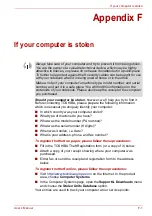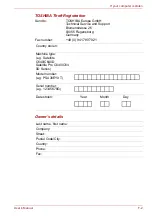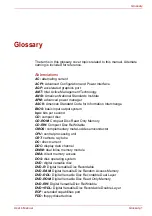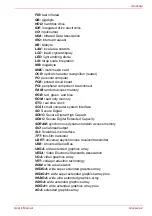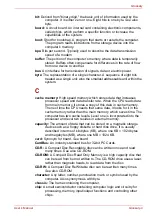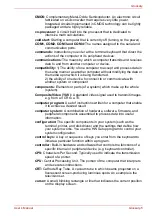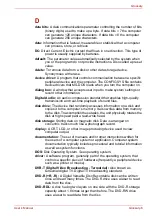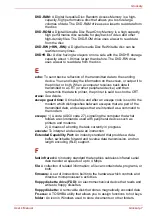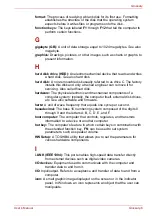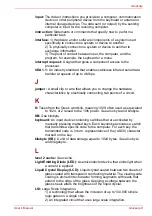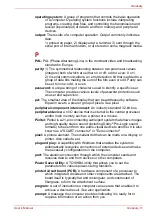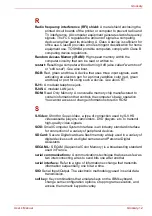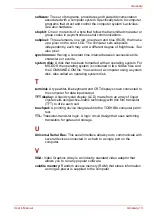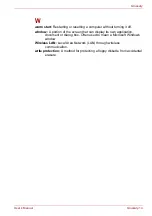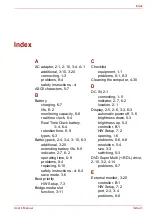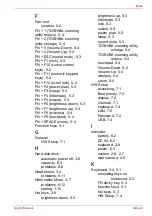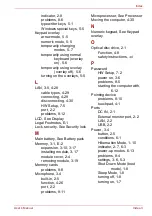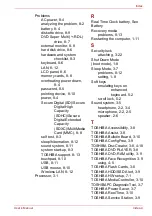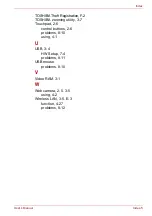
User’s Manual
Glossary-13
Glossary
software:
The set of programs, procedures and related documentation
associated with a computer system. Specifically refers to computer
programs that direct and control the computer system’s activities.
See also
hardware.
stop bit:
One or more bits of a byte that follow the transmitted character or
group codes in asynchronous serial communications.
subpixel:
Three elements, one red, one green and blue (RGB), that make
up a pixel on the color LCD. The computer sets subpixels
independently, each may emit a different degree of brightness.
See
also
pixel.
synchronous:
Having a constant time interval between successive bits,
characters or events.
system disk:
A disk that has been formatted with an operating system. For
MS-DOS the operating system is contained in two hidden files and
the COMMAND.COM file. You can boot a computer using a system
disk. Also called an operating system disk.
T
terminal:
A typewriter-like keyboard and CRT display screen connected to
the computer for data input/output.
TFT display:
A liquid crystal display (LCD) made from an array of liquid
crystal cells using active-matrix technology with thin film transistor
(TFT) to drive each cell.
touchpad:
A pointing device integrated into the TOSHIBA computer palm
rest.
TTL:
Transistor-transistor logic. A logic circuit design that uses switching
transistors for gates and storage.
U
Universal Serial Bus:
This serial interface allows you to communicate with
several devices connected in a chain to a single port on the
computer.
V
VGA:
Video Graphics Array is an industry standard video adaptor that
allows you to run any popular software.
volatile memory:
Random access memory (RAM) that stores information
as long as power is supplied to the computer.

